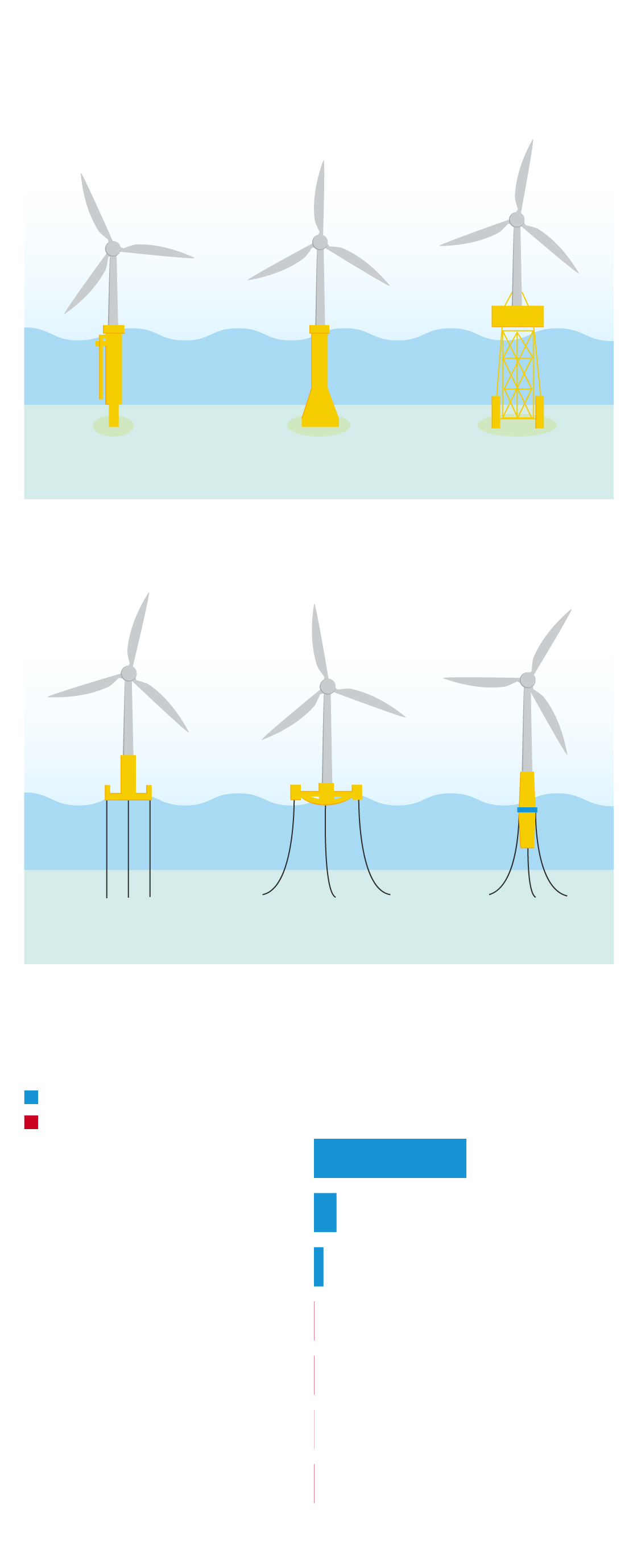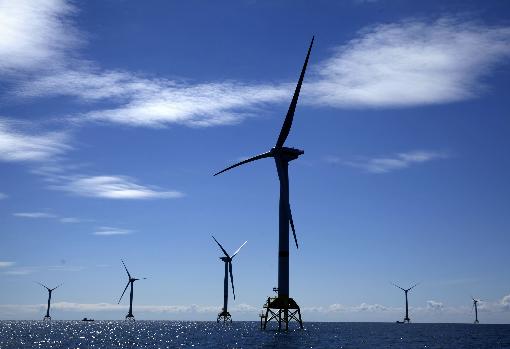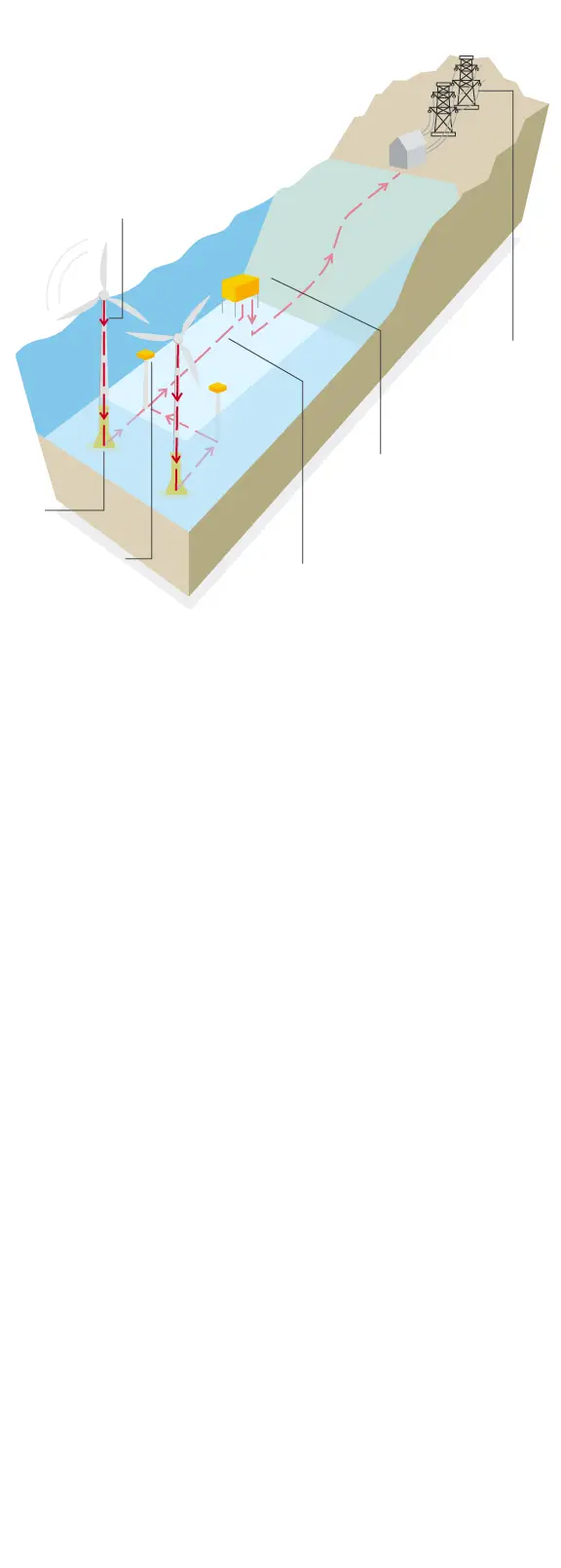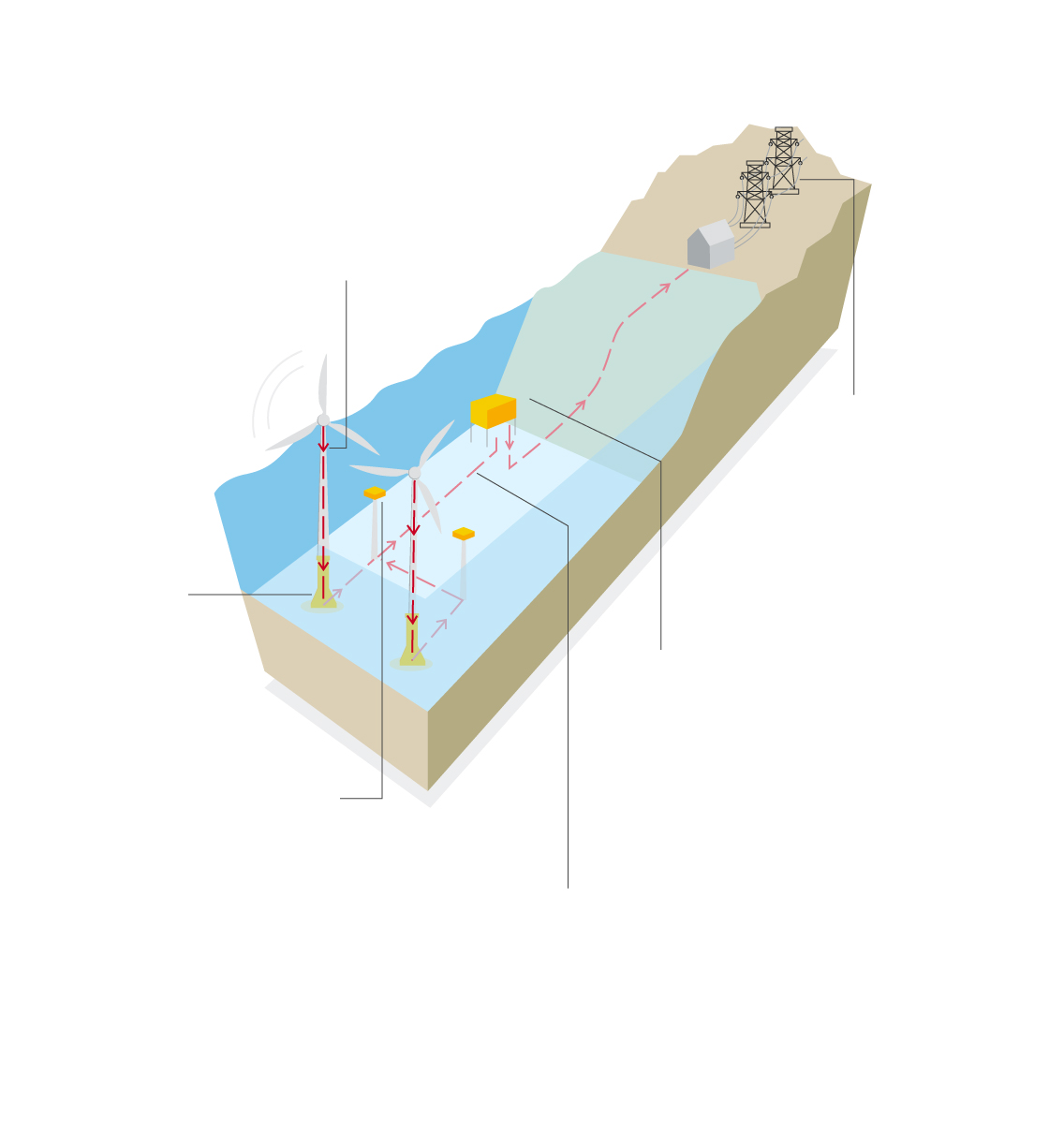"Don't mess where it covers!" is one of the phrases that is usually heard on Spanish beaches every summer. “Do you make cake here?” They usually ask the parents of the little ones. A question that engineers from the world of offshore wind ask themselves to install marine or offshore parks on the national coast.
Windmills on the high seas adjust their blades or in naval terminology their sails to make them the alternative to fossil fuels. Last 2021, the offshore generated 35,3 gigawatts (GW) of energy, yielding a third of the British. A race where Spain "aims to produce between one and three GWh in 2030", in the words of the Minister of Ecological Transition and Demographic Challenge, Teresa Ribera.
"In the sea we have nothing installed," says Tomás Romagosa, technical director and coordinator of the offshore wind working group of the Wind Energy Business Association (AEE).
A must in a country with more than 6.000 kilometers of coastline and that is exemplified in the phrase: "Do you make cake?". The answer is no. "Our coasts are very deep," warns Romagosa. "It is a very key aspect that differentiates Spain from northern Europe," explains Antonio Turiel, a CSIC researcher at the Institute of Marine Sciences.
The sea that bathes the United Kingdom, Denmark, Germany, Belgium and the Netherlands has an average depth of 700 meters. “It is a very shallow and highly anthropized sea,” says Turiel. These waters concentrate 64% of the GW generated by offshore wind power in 2021. "In Spain it is very narrow and soon reaches the continental slope where, suddenly, you reach depths of 2.500 meters in the Mediterranean and up to 4.000 meters in the Atlantic" . “This is one of the areas of scarce development in Spain”, reveals Pablo Finkielstein, manager of the Siemens Gamesa wind farm in Spain.
Evolving technology
The distance to the seabed is one of the keys to the use of this technology that already has three decades behind it. The Vindeby Offshore Wind Farm was the first offshore wind farm in history and had 11 wind turbines, “although it was very close to the coast”, says Finkielstein, but “it served to demonstrate its potential”.
The park achieved 4,95 megawatts of power with ten turbines anchored to the bed of the North Sea. “Now the technology has advanced”, adds the person in charge of Siemens Gamesa. The blades are more resistant, larger and their generation capacity is even greater. However, the anchor is still “taking its first steps”.

The offshore wind farm seeks to float in Spanish waters
Types of turbines in the sea
fixed cementation technology
floating wind technology
semi-submersible platform
The most used platforms in Europe
semi-submersible platform

The offshore wind farm seeks to float in Spanish waters
Types of turbines in the sea
fixed cementation technology
floating wind technology
semi-submersible platform
The most used platforms in Europe
semi-submersible platform
Currently, of the 28.210 megawatts of installed offshore, 99,6% is fixed grouting. "In Spain, you can't because of the depth of the sea," says María Moreno, General Manager of Greenalia Power Spain. The Spanish solution goes through the "floating", she adds. "The system is the same, because the generation is the same, except that they are on floating structures anchored to the ground with chains," she adds.
This is one of the prototypes that the Galician company wants to install off the coast of Gran Canaria. Its planes go through the use of a wind farm with a power of 50 MW, "energy to supply a population of more than 70.000 homes," the company explained in a statement. "Offshore wind power is a great opportunity for the Canary Islands, it must be a priority," supports Romagosa. “In this area there is a lot of venus along with the Cantabrian coast and the coast in front of Gerona”, she adds.
 Offshore wind farm. – Iberdrola
Offshore wind farm. – Iberdrola
A bet still in the shipyard. "In December, the Government published the roadmap for the use of offshore wind," said the coordinator of the AEE offshore wind working group. But, 'royal decrees and ministerial orders are lacking'. “Our perspective is that it will be ready by the end of the year, so that the first auctions for commercial projects can be launched at the beginning of next year,” respond sources from the Ministry for the Ecological Transition and Demographic Challenge.
"Our forecast is that the legislation on offshore wind power will be ready by the end of the year" Ministry for the ecological transition and Demographic Challenge
Along with these are determining the Maritime Space Management Plan (POEM) "to distribute the areas of the sea and its uses," says Romagosa. "We are behind schedule and the industry cannot stop," warns Moreno.
The Government will assume between 500 and 1.000 million the investment needs to enhance the port infrastructure and promote this industry. "We are one of the largest European offshore wind manufacturing hubs, but without a local market it cannot be sustained," explained the CEO of Greenalia Power Spain.
Environmental impact
Among the regulations pending in the ministerial is the environmental impact of these facilities. "Fixed cementation has more impact because of the work you do," explained Turiel. In this case, we are talking about a large pillar "anchored to the ground", comments the CSIC researcher. "It is a complex operation," warns the head of offshore wind at Siemens Gamesa in Spain.
The construction of these structures is carried out in the port, where they are later transferred to the high seas to finally fix them on the ground. "It's more complicated than on land and also the costs of the ship vary between 250.000 and 300.000 euros per day," said Finkielstein. “Then it offsets the power generation.”

This is how an offshore wind farm operates
The electricity produced in the generator is conducted inside the tower
The converter transformed the direct current into the alternating current
The transformer raises the voltage (33 kV – 66 kV) to carry the current through the park
Electricity is transmitted through submarine cables to the substation
In the substation, the electricity is converted into high voltage current (+150 kV)
Electricity is transported through the distribution network to homes

This is how an offshore wind farm operates
The electricity produced in the generator is conducted inside the tower
The converter transformed the direct current into the alternating current
Electricity is transported through the distribution network to homes
In the substation, the electricity is converted into high voltage current (+150 kV)
The transformer raises the voltage (33 kV – 66 kV) to carry the current through the park
Electricity is transmitted through submarine cables to the substation
However, the ecological trade-off is not so clear cut. "With this work he damages the entire seabed," warns Turiel. "The same thing happens with the floating one, because it is based on catenary chains that fall to the ground and can sweep the bottom and cause great erosion."
An impact that our will only have at the time of installation, if not during the useful life of the park, which "is usually between 25 or 30 years," recalls Finkielstein. The wind turbines are connected to each other by cables that go down the pilots, in the case of the fixed cementation, or suspended, in the case of the floating one, to the seabed. "This carries a lot of electricity and can disorient or even electrocute the Animaux," warned Turiel.
In his study published in the journal Science of the Total Environment, Turiel joins a group of Spanish researchers to prevent the installation of parks in the protected areas of the Mediterranean. "The sounds, vibrations and electromagnetic fields of the cables can cause the catches to dwindle," Turiel points out.
Likewise, the research shows that the impacts are not limited to the coast, but will also reach the pre-coastal municipalities. These populations must accommodate infrastructure (access roads, substations, electricity transmission lines or temporary structures) that can damage fragile ecosystems, such as buffers.
